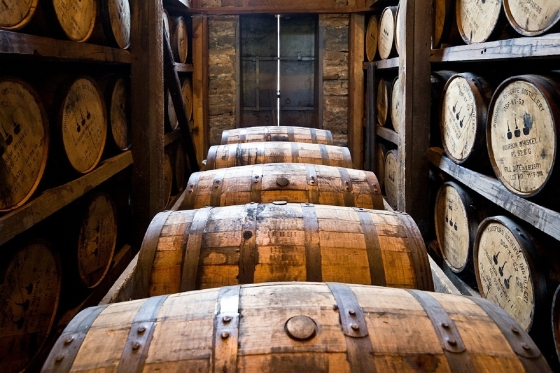Infrared Lighting and Whiskey
Lighting might be something we take for granted as being an all round essential, but it's likely not something that we consider as having many applications over and above letting us see what we're doing...

Lighting might be something we take for granted as being an all round essential, but it’s likely not something that we consider as having many applications over and above letting us see what we’re doing. One US company is about to change all that, with the news that light is now set to play a crucial part in the creation of Whiskey. Buffalo Trace, a distillery producing Kentucky bourbon, has been experimenting with ways to perfect whiskey for many years. Its latest tests have seen the label employing lighting to change the flavour of its malts.
Buffalo Trace has a long history of innovation and has experimented with every single variable in the whiskey making process. Over the last 20 years around 5000 different whiskies have been made. In small batches, Buffalo Trace has altered the quantities of grains, used diverse woods for barrels and tested different sized barrels. Its latest focus has been on heat.
The master distillers have tried heating barrels to 103 degrees for around 20 minutes, using steamed staves and many other variations. The latest of which is looking very promising. Using infra red light waves, the label’s distillers have toasted the staves of the barrels and then added Buffalo Trace before allowing it to mature for six and a half years. This led to some distinct flavours like wood, caramel, vanilla and a pepper flavour, which was drawn out of the oak.
Independent Stave, a company that partners with Buffalo Trace, applied infra-red light to two different sets of barrels. The first group received a 15-minute toasting of short to medium wave frequency at 70% power. The second batch of barrels received half an hour in short to medium wave frequency at 60% of power. Even this minor difference had a major effect on the final whiskey.
After being filled with whiskey, the barrels were left for a bit over six years in order to mature. When they were opened the first batch had a floral scent with a flavour profile that included oak, tannins, dry raisins and sweet caramel. The second batch had an intense wood aroma with a taste of dried fruit and cracked black pepper.
Using infra red lights to mature barrels is new to the whiskey industry but has been a tool in winemaking for several years. Much of the alcohol’s flavour is imparted from the barrel it is matured in and infra red light affects the flavour it provides by changing the barrel. Buffalo Trace is experimenting further with the effect of light on its whiskey but it will be several years before the first batches are ready for sampling.
Did you know light and heat have such an effect on the flavour of alcohol? Does it surprise you? Share your thoughts on our social media pages.
